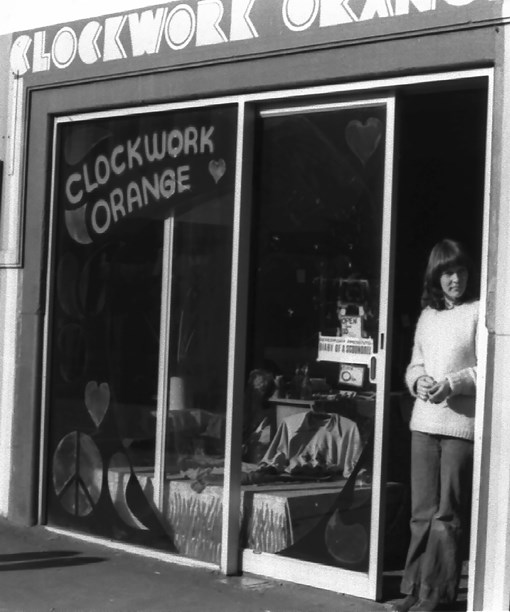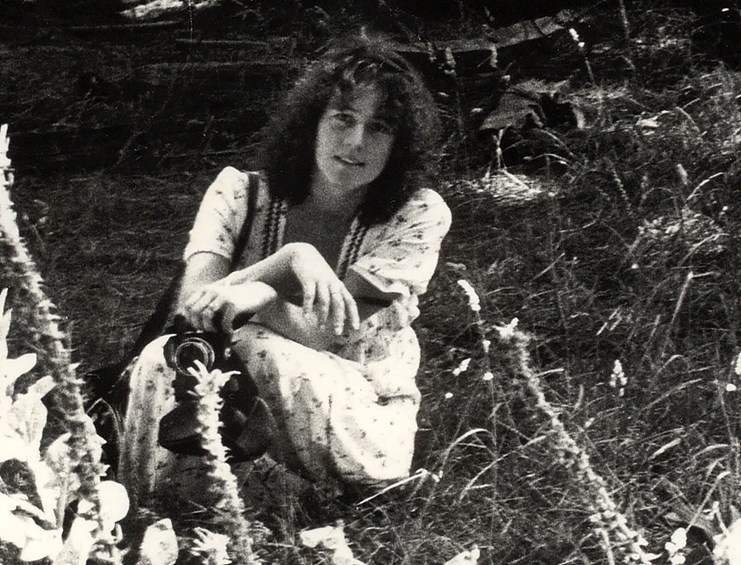Stories
Susan Scarf & Silkroad
Silkroad 1992–2002, Susan Scarf 2002–2005

The Susan Scarf fashion story is an intergenerational one. Inspired to begin sewing by an aunt, Susan went on to design in partnership with her daughter and the daughter of her friend and former business partner, and today she inspires a new generation to express their fashion creativity.
Raised on a Canterbury sheep farm, Susan was profoundly inspired by her aunt Esther, who came to stay for a week in 1958 and "made herself useful" by sewing some dresses for her then-nine-year-old niece. Almost 60 years later, Susan remembers the sense of wonder she felt as her aunt cut, pinned and sewed up four dresses from her sketches. Though she never saw Esther again, she took up sewing, "and since my mother didn’t use her machine, she let me have free use of it". By the time she was 12, she was making most of her own clothes.
Fashion wasn’t considered a career choice in Canterbury in the 1960s, and Susan trained as a nurse after she left school, but looked for a creative career as soon as she had completed her training. She worked as a darkroom specialist at Ilford in Christchurch and as a freelance photographer. In 1971 she met another photographer and skilled sewer Margaret Morrow and they decided to make clothes to sell at the Petticioat Lane market. Their label, 'Clockwork Orange' was successful, so they opened a own store in Gloucester Street, near the Square.

Margaret Morrow in the doorway of Clockwork Orange, the retail store she started with Susan Scarf in Christchurch in 1971. Image © Susan Scarf.
Inspired by 19 magazine, a British glossy aimed at 16- to 19-year-olds, their garments were mainly made in cotton; Liberty prints from Ballantynes or Indian cotton lawn imported for 20 cents per metre and dyed at the Sumner Dye Works and sometimes appliquéd or smocked. Jim Morrow, Margaret’s husband, also hand-made clogs for customers. They developed a strong following, and those in the know would come by on Friday nights to get the first pick of the new garment deliveries.

Susan Scarf wearing a dress from her first label Clockwork Orange, 1973. Image © Susan Scarf.
Between the closing of Clockwork Orange in 1975 and 1992, Susan worked as a yoga and meditation instructor, and as a preschool teacher but also continued with some design work for a small ceramic business and as a freelance fabric designer for Moontide swimwear. After moving to Auckland, she started to think of opening a Clockwork Orange for the 1990s and that is what she did.
Silkroad opened in the Giffords Building on Vulcan Lane in 1992, with Susan’s workroom upstairs. She initially travelled overseas to source cottons, silks, linens and wools, which were also printed overseas. But over time, Silkroad began incorporating her own artwork which was printed locally onto natural fabrics also sourced locally through fabric wholesalers such as Cooper Watkinson and Roger Wall.

Silkroad design, 1995. Image © Susan Scarf.
By 1999, Silkroad had developed a loyal customer base. "Our customers were women of all ages, very young to elderly. This made our store a 'destination' store and this pleased me very much."
But things changed for the label in a number of ways from 2000, when the America’s Cup came to town. In Auckland for the event, Anna Piaggi, contributor to Vogue Italia and Miuccia Prada both visited Silkroad and bought a number of garments.

Vogue Italia's Anna Piaggi wore this Silkroad skirt as a top. Image © Susan Scarf.
As a result of their enthusiasm for her work, Susan was issued a last-minute invitation to show her collection at the upcoming Australian Fashion Week in Sydney. This was the first fashion show Silkroad had done, and they had very little time to put it together, but the aftermath saw them expanding into the Australian market. The increased demand internationally for her garments led to an expansion in the design team, too, with Susan’s daughter Amy Tonkin, and Rosie Morrow – the daughter of Margaret, her Clockwork Orange business partner – joining as co-designers. They had both worked in the store and then the workroom during university, and their roles expanded with the business.
Expansion was a constant from this point on. As a result of their entry into international markets, which increased in scale with each fashion show they mounted, Silkroad was renamed Susan Scarf in 2002, to distinguish it from other 'Silk Road' labels overseas. A second store was opened in Auckland’s Newmarket and the collections became more comprehensive, with their cotton and silk garments, shoes and jewellery being joined by knitwear and jeans for the first time in 2002, and later underwear was added to the collections. At the same time, as a result of the increased scale of production, garment designs were somewhat simplified and bulk fabric availability played a role in design decision-making.
Silkroad/Susan Scarf garments were designed in cohesive collections inspired by the Asia-Pacific region, its plants, motifs, and garment shapes. Chinese silk brocade made an early appearance, later followed by Japanese fan prints on singlets and t-shirts, and watercolour-esque quilted jackets with chinoiserie-inflected prints. New Zealand botanicals such as kowhai and toitoi, appeared in fabric prints, and a whole nautical collection, Shore Leave, nodded to New Zealand’s relationship with the ocean. The designers’ creative goals were "to make good quality, unique clothes that people could love and wear for a long time".
Certainly they achieved this, and the increasing demand for their garments meant that more people had access to them globally. However, the speed and scale of expansion came with a lot of stress, and shifted Susan’s attention away from the creative side of fashion-making. Wholesale clients occasionally went bankrupt and didn’t pay their bills, and the business did not have the capital or the business experience to easily absorb or predict these kinds of events. Susan decided to close the label in September 2005, wanting to "be more creative and less of a businesswoman". Their final collection was titled Phoenix: "We knew this would be the burning of everything. We didn’t know how it would turn out but we knew we were heading for radical change."
After the Susan Scarf label closed, Susan focused on the construction side of the fashion business, pattern-making for Trelise Cooper and freelance pattern-making for other labels, using the skills she was inspired to develop by her Aunt Esther. Today she teaches primary school students, and encourages them to develop their own fashion. Amy Tonkin worked as a freelance graphic designer before starting as a designer at Città and Rosie Morrow worked for Trelise Cooper until she left to start a family.
Text by Genevieve de Pont. Banner image of Rosie Morrow, Susan Scarf and Amy Tonkin at Australian Fashion Week in 2002. Image © Susan Scarf.
Last published September 2017.